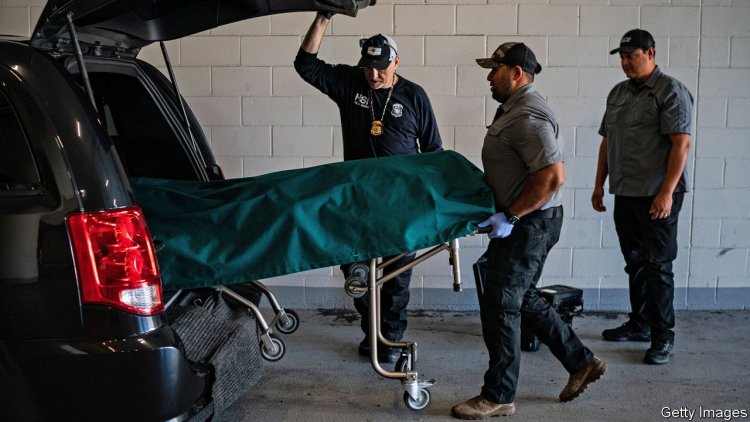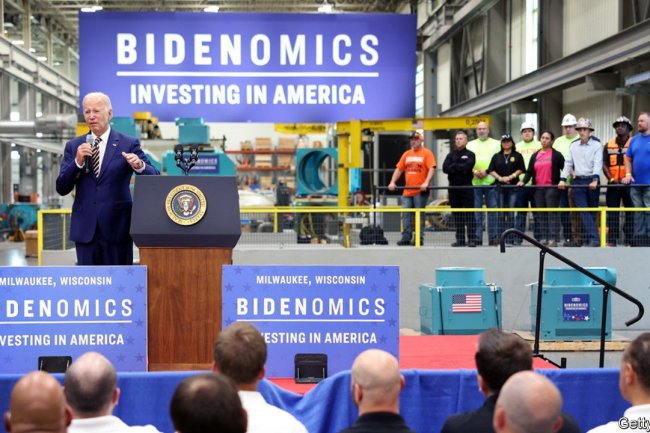What to read to understand America’s opioid epidemic
image: Getty ImagesMORE THAN 600,000 Americans and Canadians have died of an opioid overdose since 1999. Modelling suggests that 1.2m more could die by the end of this decade. For more than a quarter of a century Americans of all classes have watched friends, relatives and coworkers succumb to and, sometimes, overcome addiction to opioids. During that time the epidemic has mutated. First, there were pills. Doctors prescribed OxyContin and other opioids to patients to treat moderate and severe pain, often irresponsibly. When pills became too expensive and Oxy was reformulated to make it harder to crush, some addicts switched to heroin, then eventually to fentanyl, a much stronger synthetic opioid. No part of America has been spared. This list includes five books and one television series about the legal drug industry that initiated the epidemic, the criminal organisations that took advantage of it, the devastation of entire communities and the remarkable people who are rebuilding them.E


MORE THAN 600,000 Americans and Canadians have died of an opioid overdose since 1999. Modelling suggests that 1.2m more could die by the end of this decade. For more than a quarter of a century Americans of all classes have watched friends, relatives and coworkers succumb to and, sometimes, overcome addiction to opioids. During that time the epidemic has mutated. First, there were pills. Doctors prescribed OxyContin and other opioids to patients to treat moderate and severe pain, often irresponsibly. When pills became too expensive and Oxy was reformulated to make it harder to crush, some addicts switched to heroin, then eventually to fentanyl, a much stronger synthetic opioid. No part of America has been spared. This list includes five books and one television series about the legal drug industry that initiated the epidemic, the criminal organisations that took advantage of it, the devastation of entire communities and the remarkable people who are rebuilding them.
Empire of Pain. By Patrick Radden Keefe. Doubleday; 560 pages; $32.50. Picador; £20
What happened in the late 1990s to spark the epidemic? The answer, according to Patrick Radden Keefe, a staff writer at the New Yorker, is that Purdue Pharma, a middling pharmaceutical company, began to sell a powerfully addictive opioid painkiller, OxyContin.
“Empire of Pain” is an investigative history of the Sackler family, the socialites and philanthropists who owned Purdue. The company’s mendacious marketing and cosy relationships with regulators created the conditions that encouraged doctors to overprescribe their drug, leading to widespread addiction. Through interviews and the meticulous examination of reams of documents made public in countless lawsuits, the author paints a damning portrait of a family addicted to opioid profits, no matter the cost to society. The Sackler family denies any wrongdoing. Other drug companies are complicit in the epidemic. But “Purdue played a special role”, Mr Radden Keefe writes, “as a pioneer”.
Dreamland: The True Tale of America’s Opiate Epidemic. By Sam Quinones. Bloomsbury; 368 pages; $28 and £18.99
If there is one outstanding chronicler of America’s drug-overdose epidemic, it is probably Sam Quinones. In “Dreamland” he tells the story of two waves that gain strength as they sweep across America, before eventually crashing into one another. While prescription pills were moving from Appalachia westwards, cheap black-tar heroin was moving east from the west coast, supplied primarily by dealers from the small Mexican state of Nayarit. Readers will learn about the history of pain management, the economic conditions of northwestern Mexico, the morphine molecule and the curious role that Walmart played in Ohio’s opioid economy. Mr Quinones relies on interviews with addicts, and so his book gives ample space to the perspective of the people most affected by the opioid crisis. It is not just a portrait of an epidemic, which may sound clinical, but of a country stricken with a plague of addiction and death.
The Least of Us: True Tales of America and Hope in the Time of Fentanyl and Meth. By Sam Quinones. Bloomsbury; 432 pages; $18 and £20
In this sequel to “Dreamland”, Mr Quinones argues that the twists and turns of America’s opioid epidemic over the past 25 years have been caused largely by trends in supply. Opioids were foisted on Americans, he argues, first by pharmaceutical companies and reckless doctors and then by Mexican drug gangs, which sell heroin and fentanyl, which is up to 100 times more potent than morphine and cheap to produce. “The Least of Us” is both more devastating and more hopeful than Mr Quinones’s previous book. “I don’t know any longtime fentanyl users,” one drug counsellor and former addict told the author. “They all die.” Yet the book also includes stories like that of Portsmouth, Ohio, which has transformed from the “nation’s capital of…pill mills” into a haven for recovering addicts. America’s opioid epidemic has lasted so long that it is tempting to think that its death toll, of 80,000 a year, is inevitable. “The Least of Us” is a reminder that people are battling for their lives, and the lives of others.
El Narco: Inside Mexico’s Criminal Insurgency. By Ioan Grillo. Bloomsbury; 336 pages; $18 and £12.99
It is impossible to understand America’s opioid epidemic without examining what has happened south of the Rio Grande river over the past few decades. Cannabis, argues Ioan Grillo, a British journalist and expert on the Mexican drug war, was a gateway drug for the gangs. Cocaine, heroin, fentanyl and meth followed. “El Narco” explores how Mexico’s transition to democracy upended the corrupt system of co-operation between traffickers and law enforcers that allowed criminals to operate relatively quietly. President Felipe Calderón confronted the drug-traffickers by waging a war on drugs. The gangs turned on each other, too. They created their own paramilitary forces, armed with American guns, which fight to control trafficking routes. Their battles have killed thousands of innocent Mexicans. What have Mexico’s narcotraficantes become? Mr Grillo wonders. Are they gangsters, terrorists, warlords or insurgents? America’s Republican Party increasingly views Mexico as an enemy. The relentless flow of drugs across the border to satisfy American demand plays no small role in that.
Demon Copperhead. By Barbara Kingsolver. Harper Collins; 560 pages; $24.99. Faber & Faber; £20
Barbara Kingsolver’s Pulitzer-prizewinning novel is not entirely about opioids. It is a grim tale, inspired by Charles Dickens’s “David Copperfield”, about an orphan growing up in the mountains of southwest Virginia. As this is Appalachia in the early 2000s, the epidemic is inescapable. “What’s an Oxy?”, asks 11-year-old Damon Fields (“Demon”, the narrator), after his mother takes a fatal overdose. Many American readers probably recognise themselves or people they know in the book’s cast of characters. There is the sports doctor who gets Demon hooked on the drug that killed his mother, the Purdue salesman convinced he is a good soldier in the war against pain, the girlfriend who introduces Demon to fentanyl and the nurse who gets him into treatment. “It becomes your job, staving off the dopesickness for another day,” Demon writes in his recovery journal. “Then it becomes your God.”
Dopesick. Streaming on Hulu.
“Dopesick” is a good introduction to learning about the epidemic. It is a harrowing eight-episode series based on the book “Dopesick: Dealers, Doctors and the Drug Company that Addicted America”, by Beth Macy, an American journalist. Some actors play real people: viewers meet the Sacklers; the regulator from America’s Food and Drug Administration who approved a label saying that OxyContin was “believed” to be less addictive than other opioids (and then went to work for Purdue); and the federal prosecutors who successfully charged the firm with a felony for “misbranding” its drug. The most compelling character is Samuel Finnix (Michael Keaton), an amalgam of several real doctors. The character prescribes OxyContin to his patients in coal country before becoming hooked himself. Finnix’s descent into addiction is nightmarish. He is in thrall to the drug, living only for the next high. The series covers the years from 1996, when OxyContin was introduced, to 2007, when Purdue pled guilty to a felony charge. No second season is planned, though, tragically, there is no shortage of material for one. ■
Also try
We explore why so many Americans are dying before they should (addiction to opioids is one big reason) and track the spread of fentanyl into America’s big cities. A leader argues that solutions are available, but difficult to put into practice. These two episodes of our podcast Checks and Balance asks whether America can solve the crisis. Here we write that addicts may have an easier time getting treatment. We explained how opioids (and anti-inflammatory drugs) work against pain, and what better remedies might become available. If you’re interested in Mexico, see our list of books recommended by our bureau chief in that country.
What's Your Reaction?













